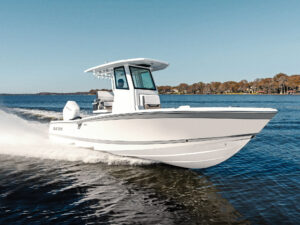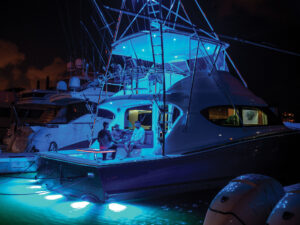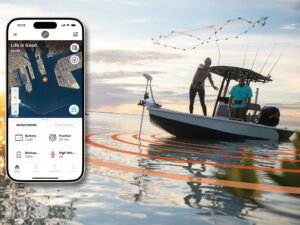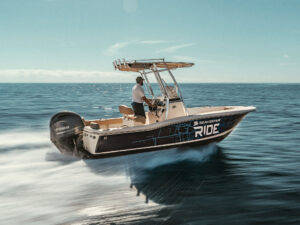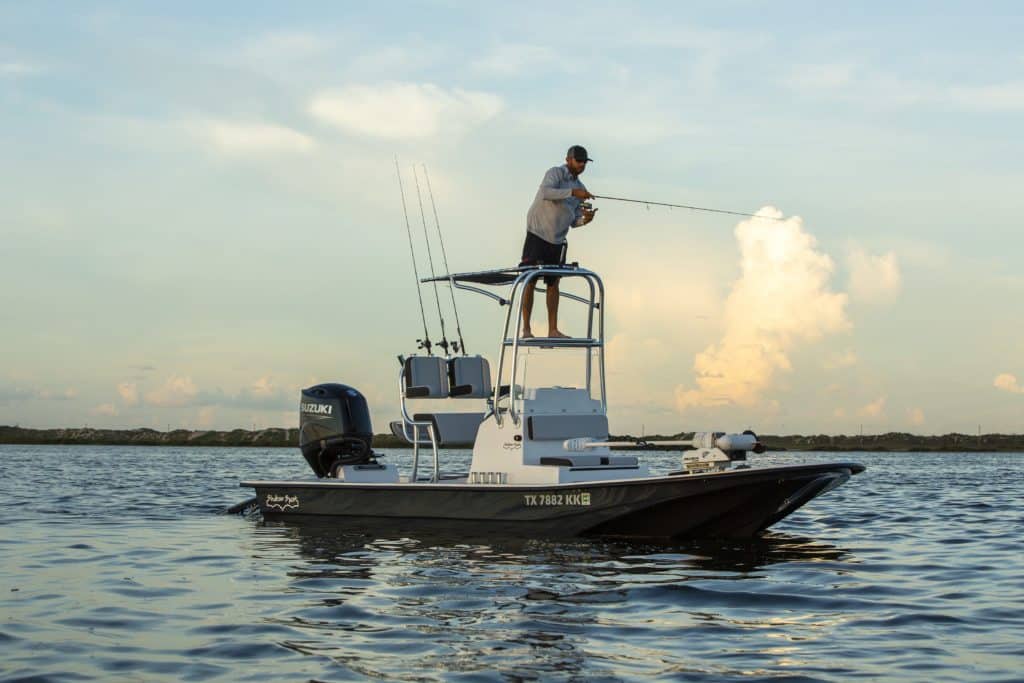
With a name like Texas sled or scooter, it is obvious the boat was designed to access the super-skinny water along the Gulf Coast of the Lone Star State. But these stable, shallow draft and quick hulls are popular anywhere fish hide and other boats can’t go.
Capt. Brian Barrera is a perfect example of the Texas sled owner. He guides shallow water fishing trips for redfish and trout out of South Padre Island. “I’m looking for a boat with low gunwales to make it easier to enter and exit the water when wade fishing,” he says.
A thousand miles from Texas, Ben Alcocer of 13 Fishing runs a sled in the backwaters of Clearwater, Florida. “I need a boat that is seaworthy and still has a shallow draft,” Alcocer says.
For both anglers, a Texas sled is the perfect compromise between shallow draft, moderately rough-water capability and versatility to fish with friends and family.
Characteristics of a Texas Sled
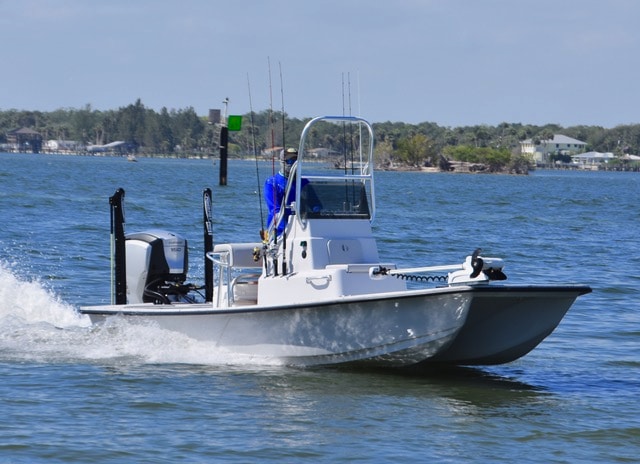
A Texas sled is one of the most recognizable boats on the water, thanks to the distinctive flat-bottom with super low gunwales that make it easy to step out and back in. Boats of this style typically measure between 14 and 25 feet with a wide beam and square bow.
But the real magic lies below the waterline. The classic Texas sled features a unique tri-hull design that creates lift on the outside edges while channeling water to the propeller. Berrera says the most popular hull designs include V-bottom, hybrid, tunnel and double tunnel with an emphasis on stability and shallow draft. When the boat is running at speed, the hull rises out of the water to reduce draft and increase freeboard, allowing the boat to cut through short chop and knock down spray.
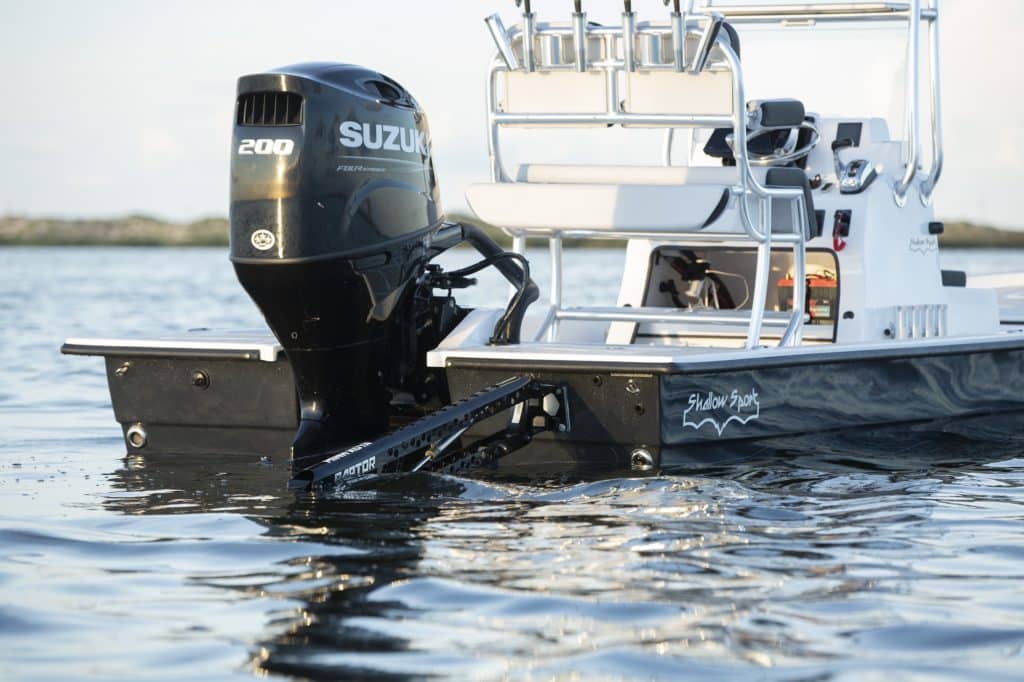
A tunnel running down the center the center is engineered to force the maximum water to the propeller, letting these unique vessels to skim along in the skinniest of waters. The motor is inset in the transom to reduce turbulence and increase hole shot speed. Add a jack plate to raise the motor and these boats can run through a puddle of spit.
Despite all of this, a Texas sled can carry a large motor. You can get away with a lightweight outboard on a smaller sled or slap a 450 hp four stroke on a 25-foot boat and almost literally fly across the water.
On the top side, the Texas sled has more space for a full-size console and casting platforms. Most sleds have an elevated console and larger boats may include a tower with controls. “Adding a tower gives optimal visual reach but sacrifices stability,” Berrera points out,
Alcocer fishes with live bait, so the increased capacity allows him to add a 50-gallon livewell. Since he often has to cross an open bay to reach the backwaters, he looks for a hybrid hull that combines shallow draft with choppy-water performance.
A Texas sled has capacity for all the bells and whistles. A shallow-water anchor system, trolling motor, integrated GPS and advanced sonar are just a few of the modifications Berrera has made to his sled. “I like a networked control system where I can run all my accessories from my multi-function display.”
Pluses and Minuses
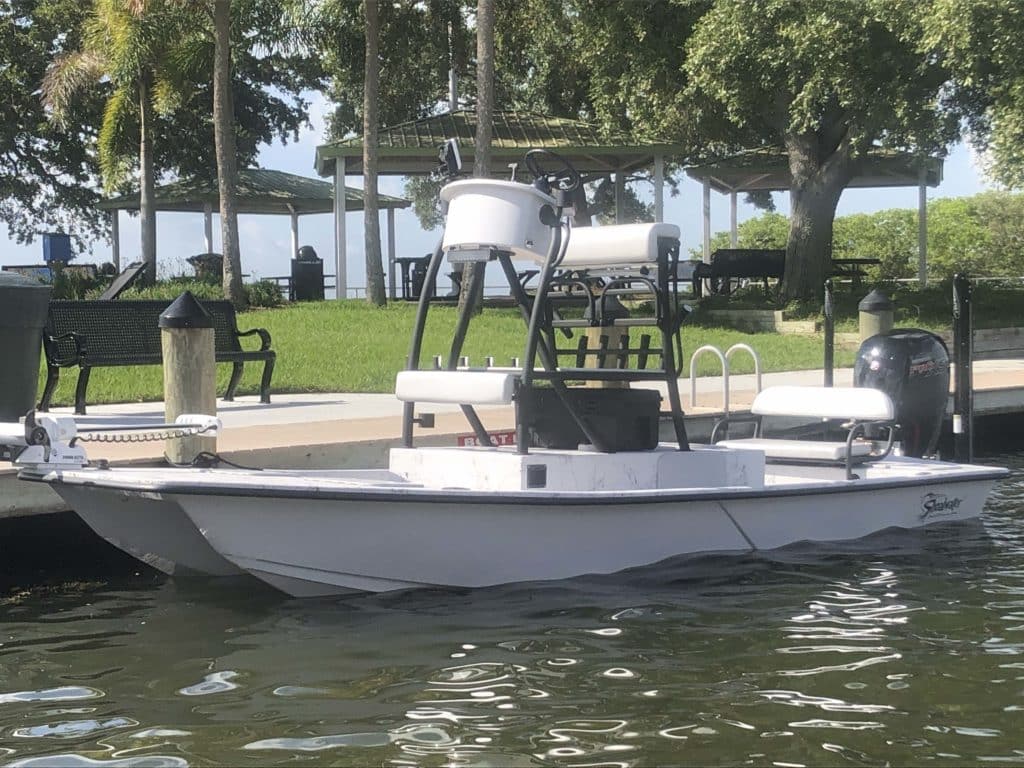
Every boat is a compromise, and the Texas sled is no different. A flat bottom boat may offer shallow draft, but less boat in the water provides less surface area for a tighter turning radius. And when running wide open, they are often mostly just skimming along on the prop. This can make them prone to cavitating in turns.
The advantage of a Texas sled is shallow draft and high capacity. “The whole idea is the ability to go virtually anywhere there is water,” Alcocer says. The design allows him to get away from high-pressure areas and find his own fish. “On the falling tide, I can stay in the creeks longer and I don’t have to worry about getting stuck,” he explains.
There is another downside. With only a few inches of the motor’s lower unit in the water, the propeller cannot efficiently produce thrust. And the minimal amount of lower unit in the water often necessitates the installation of aftermarket low-water pick up to ensure enough water makes it to the block for proper cooling.
“One thing is driving over shallow water, it’s another to stop your boat and then get going on plane again,” says Barrera. Captains driving these unique vessels will often have to find a deeper depression on the flat they are fishing and spin a tight donut to get the boat up on plane and out again.
These shallow-water sleds may not be the most seaworthy boats for running and fishing is rough water, Berrara points out. “When it’s blowing 25 mph, I gotta run the shoreline in 8 inches of water to avoid the chop, now we’re talking!”

